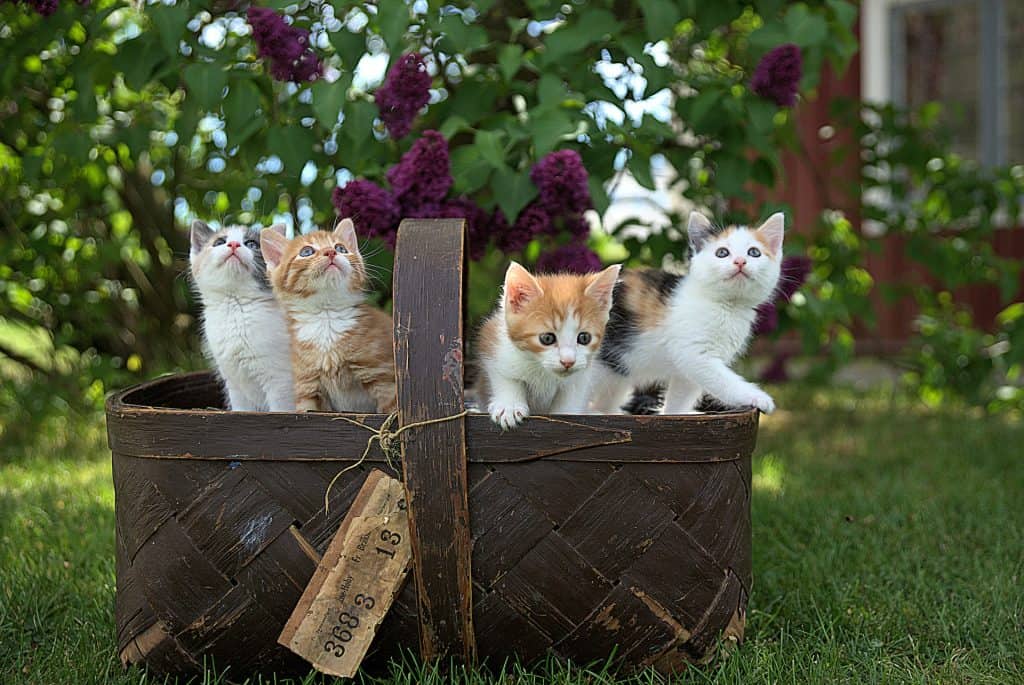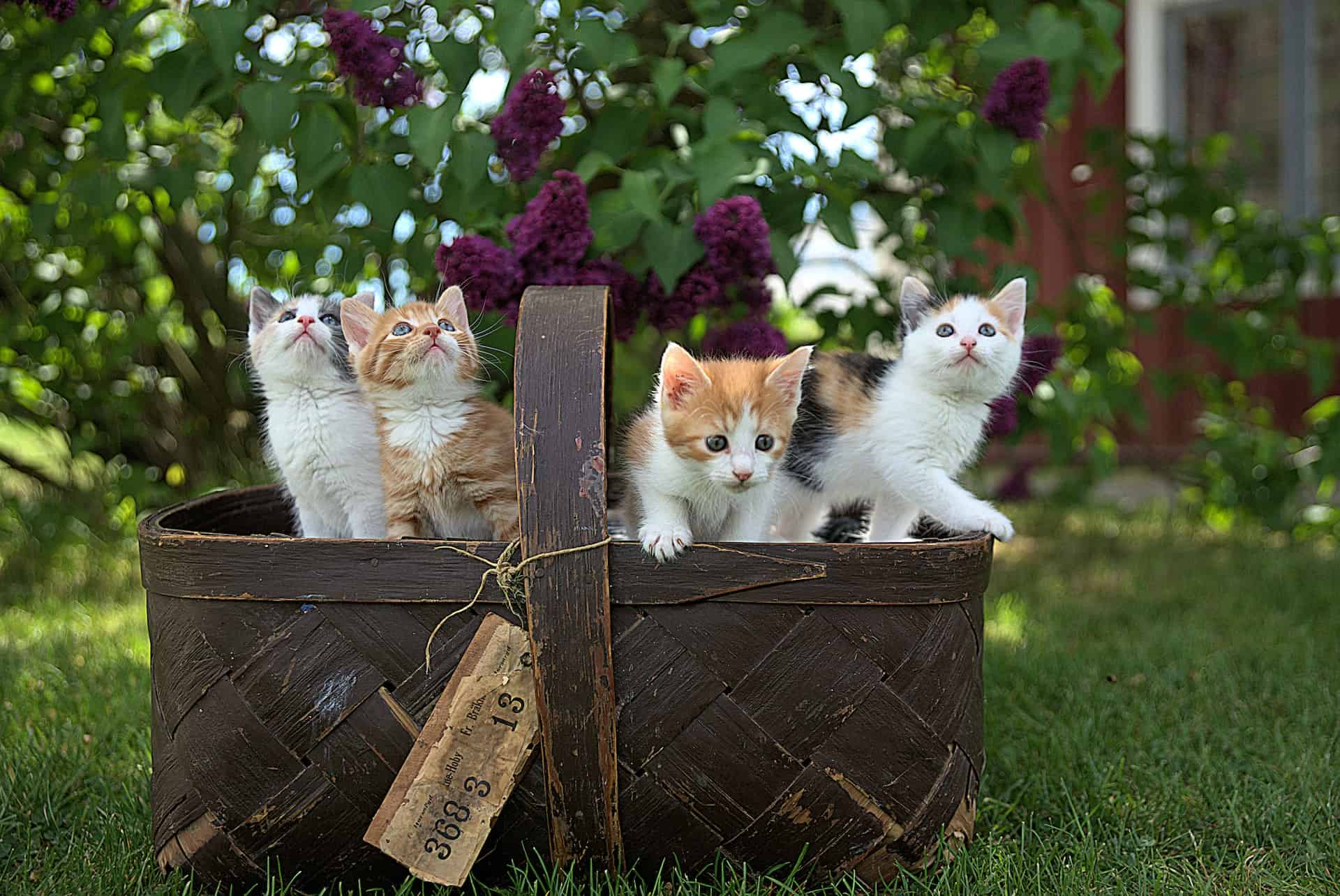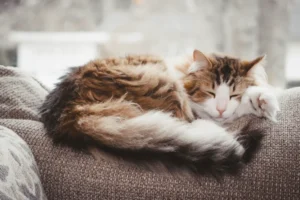Disclosure: We may earn a commission from helpful, relevant links in our content. No cost to you. See our privacy policy.
Knowing the signs of hunger in kittens is vital to ensure they get the proper nutrition and care.
Being able to identify a kitten’s hunger cues not only ensures proper nourishment but also helps in building a stronger bond of understanding between you and your young feline.
It’s essential to monitor a kitten’s feeding schedule and ensure they get enough to eat. Keep reading to find out how to feed your kitten correctly.

Do Kittens Cry When Hungry?
When hungry, kittens can make various vocalizations, including meows and cries. They may also show physical signs of hunger, such as searching for food or becoming more active.
If the kitten is crying, it may be going through a growth spurt when they eat a lot and grow quickly. Moreover, the tone and frequency of a kitten’s cry can offer clues about its hunger levels; a sharper, persistent meow might suggest an immediate need for food.
However, you must first take it to a veterinarian to confirm that it does not have worms or anything else that could be causing malnutrition.
You can freely feed your kitten if it is healthy. It’s rather tough to make a kitten fat because they have so much energy and burn many calories. If you’re already free-feeding the kitten and the vet clears it, you can assume it’s a behavioral issue rather than a medical one.
Change to the best food you can afford (here are some food recommendations for 2-month-old kittens).
If the kitten continues to cry, consider increased enrichment, more playing, and some toys to interact with.
Common Signs That Your Kittens Are Hungry
Kittens will exhibit many signs when hungry, including:
- Vocalizing – Kittens may meow, cry, or make other vocalizations more frequently when hungry.
- Searching for food – Kittens may wander around or sniff the area for food when hungry.
- Suckling – Kittens may start to suckle on anything nearby, such as clothing or fingers, if they are not getting enough milk from their mother.
- Becoming more active – Kittens may become more active and playful when hungry and looking for food.
- Moving closer to their food bowl or caretakers – Kittens may start to follow their food bowl or their human caretakers more closely when they are hungry as a sign of seeking food.
Common indications that the cat needs food right away include meowing, following you around the house, and pacing between the owner, food bowl, and kitchen.
How Often Do Kittens Get Hungry?
Growing kittens have distinct nutritional requirements that you cannot address by treating them as adults. Please don’t make the mistake of restricting meals because their energy needs regularly change as they grow.
Newborn kittens need to eat every 2-3 hours to get all the nutrition. Until about four to six months, kittens can get hungry every few hours and need to eat at least three times a day to get the food they need. As they grow older, the time between feedings will increase.
Kittens are always hungry since they are developing. Therefore, they require regular feeding, though the time to quit free feeding is entirely up to you. Our veterinarian advises giving them as much food as they desire until they are three months old.
Kittens should not be restricted in their calorie intake. They require a lot of calories since they are busy growing quickly.

Is Your Kitten Constantly Hungry?
Your kitten may only obtain the nutrition required if the food is of good quality. If the food is low quality, it can cause overeating and constant hunger. Consider taking the kitten to the clinic to rule out parasites if it is continuously hungry.
You can check with your veterinarian to see whether he’s at a healthy weight and if feeding him extra is safe.
If the kitten is not used to decent food (starved rescue), he may overeat initially, but he will ultimately learn how much is enough. If you rescued a street kitten, it may have known to eat as much as possible but should gradually adjust.
One issue with restricting food while a kitten is that it causes a gobbling behavior, which is exceedingly difficult to change and frequently leads to obesity as an adult. This is seen in rescue cats who were starved as kittens.
You can try puzzle feeders if they are feasting on food and eating too quickly. It makes the cat struggle for food, which slows him down. A puzzle feeder can also be used for wet food, but consult your veterinarian before changing your cat’s diet.
Can You Overfeed a Kitten?
Kittens should be allowed to eat as much as they desire. They have a lot of energy and a lot of room for development.
Allow kittens 6 months and younger to eat as much as they want, preferably 3-4 times per day. You can feed them twice a day when they reach six months, depending on their size. Simply getting them used to a schedule will help them adjust.
Unless it’s a starved, adopted kitten from the streets who hasn’t learned there’s always food at your place, you typically can’t overfeed a kitten. They eat a lot, they poop a lot, and they play a lot. If your kitten tends to be most active and playful in the morning, an early breakfast might be best to fuel its energy.
Most veterinarians say you can’t overfeed a kitten under six months, so feel free to serve them wet food during meals, with a smaller addition of dry food. You can transition to an adult-recommended calorie intact at a year old but consult with your veterinarian first.
Free-feeding a kitten should be fine until it is 5 to 6 months old, at which point you can begin rationing appropriately. Remember that every cat is unique, and the amounts in packs and cartons are only a general guideline.
Wet food is superior to dry food. To ensure your kitten has enough, try wet food 3x a day. In addition to wet food, I recommend keeping a bowl of dry kitten food available. Consult our guide on underfeeding cats, if you have more concerns.
Allow the kitty to eat at his leisure. Refill the plate when it is empty. You don’t have to be concerned about a kitten becoming overweight. If you’re feeding dry food, mix in a bit of water.
Related: Why Adult Cats Eats Kitten Food
How to Tell if the Kitten Is Full?
Several signs can indicate that a kitten is full:
- Once a kitten has had enough, they will stop eating and may walk away from their food bowl.
- A full kitten may become less active and want to rest or sleep.
- After eating, kittens may start to groom themselves, cleaning off any food on their face or paws.
- After a meal, kittens may start to play, indicating they are satisfied.
- Kittens may knead their paws after a meal, which can signify that they are content and feeling full.
It’s essential to monitor your kitten’s eating habits and consult with a veterinarian to ensure they get the right amount of food and nutrition for their age and size. This will help to ensure your kitten grows and develops appropriately and stays healthy.
FAQs
Can you leave the kitten alone while you sleep?
Leaving kittens alone is not recommended overnight because they need constant supervision, care, and socialization. They may get into mischief, ingest dangerous objects, or get injured. Have someone check on them regularly or keep them in a safe, secure area.
How often do kittens need milk?
Newborn kittens need milk every 2-3 hours. As they grow older, the time between feedings will increase, and they will start eating solid food. At 3-4 weeks, four feedings per day; at 6-8 weeks, three feedings per day. And at 3-4 months, two feedings per day. Consult with a vet for a proper feeding schedule
How often do kittens need dry food?
As a general rule of thumb, kittens should have access to a supply of dry food at all times, so they can eat whenever they want. As long as you give them enough wet food, we suggest leaving some dry food for free throughout the day, so they may snack when hungry.
It’s also critical to monitor their weight and body condition to ensure they are getting enough nutrition and not becoming overweight.
Alex, a passionate animal lover, has experience in training and understanding animal behavior. As a proud pet parent to two dogs and three cats, he founded AnimalReport.net to share insights from animal experts and expand his knowledge of the animal kingdom.





